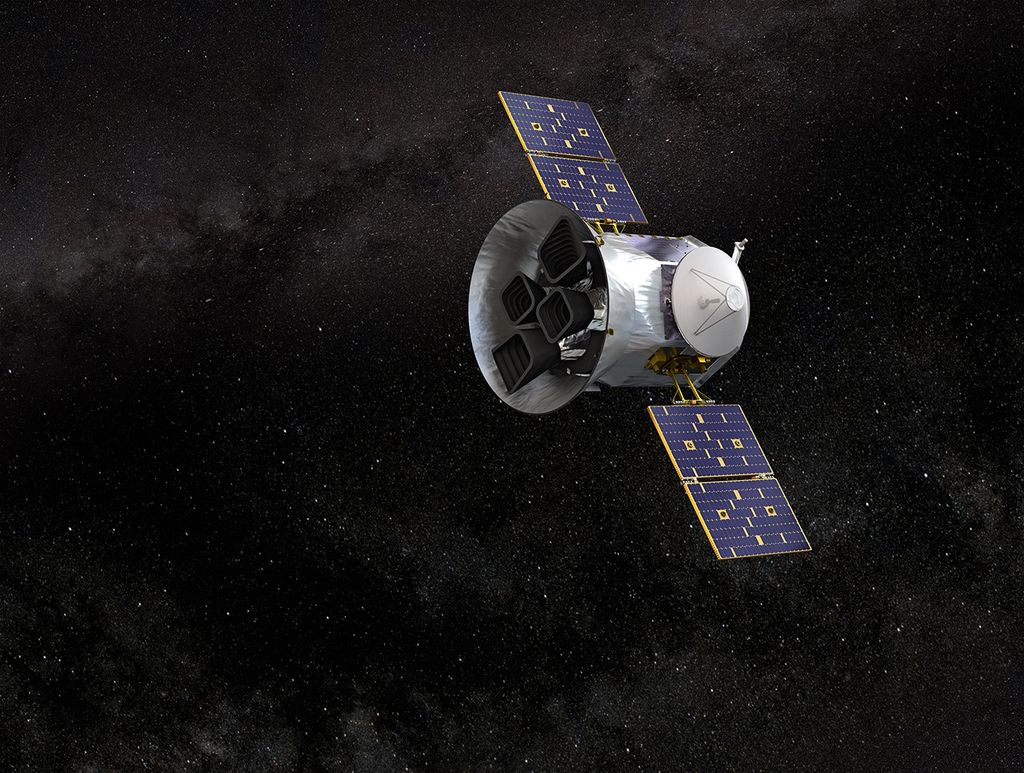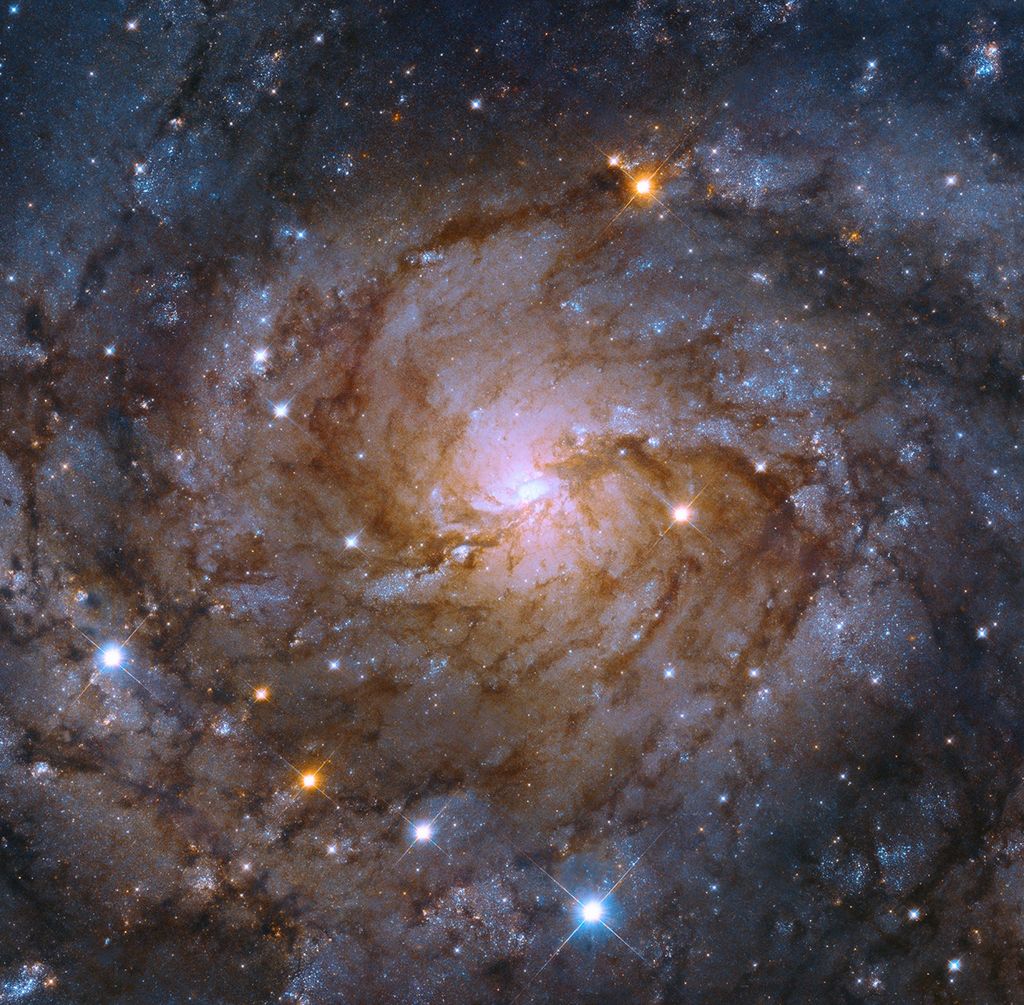The primary objective for Apollo 11 seemed simple and straightforward – “Perform a manned lunar landing and return.” That’s how the official NASA document dated June 26, 1969, and signed by Apollo Program Director Sam C. Phillips and Associate Administrator for Manned Flight George E. Mueller, worded it. And it perfectly reflected President John F. Kennedy’s goal, set in May 1961, that “this nation should commit itself, before this decade is out, of landing a man on the Moon and returning him safely to the Earth.”
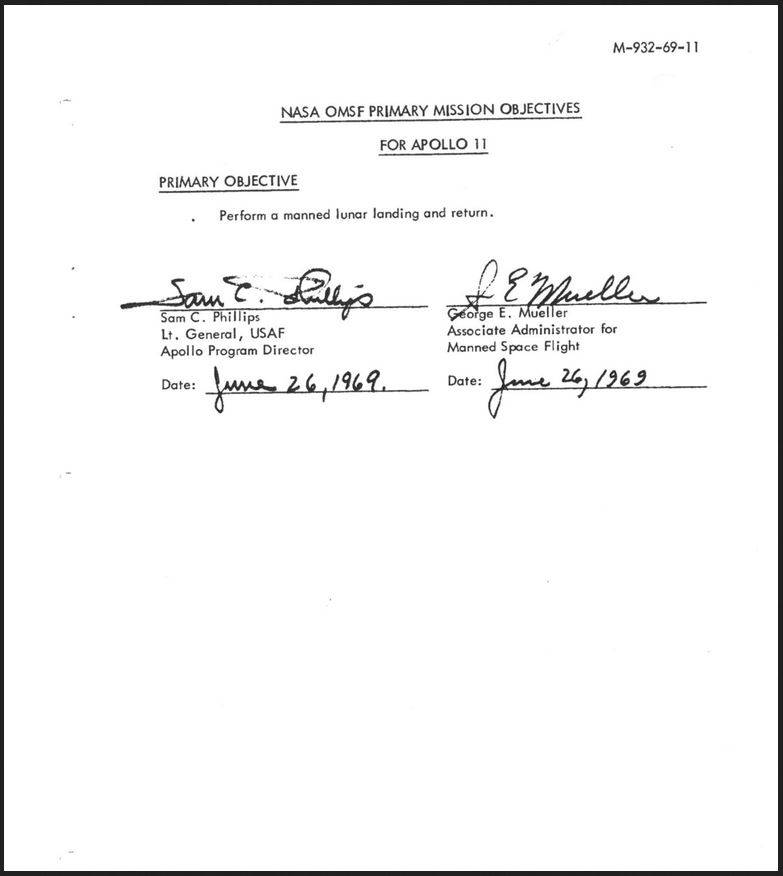
Official NASA Apollo 11 Mission Objectives document.
And while the stated objective sounded simple, accomplishing it was far from easy. And there were of course secondary objectives, such as understanding the performance of spacecraft, spacesuits, and the astronauts themselves on a lunar landing mission, setting up experiments on the lunar surface, and returning rock and soil samples for analysis by scientists. The Apollo 11 crew of Neil A. Armstrong, Edwin E. “Buzz” Aldrin, and Michael Collins, their backups James A. Lovell, Fred W. Haise, and William A. Anders, as well as NASA and contractor personnel at centers around the country, recovery forces in the Pacific Ocean, and at tracking stations around the world were gearing up to support the historic mission.
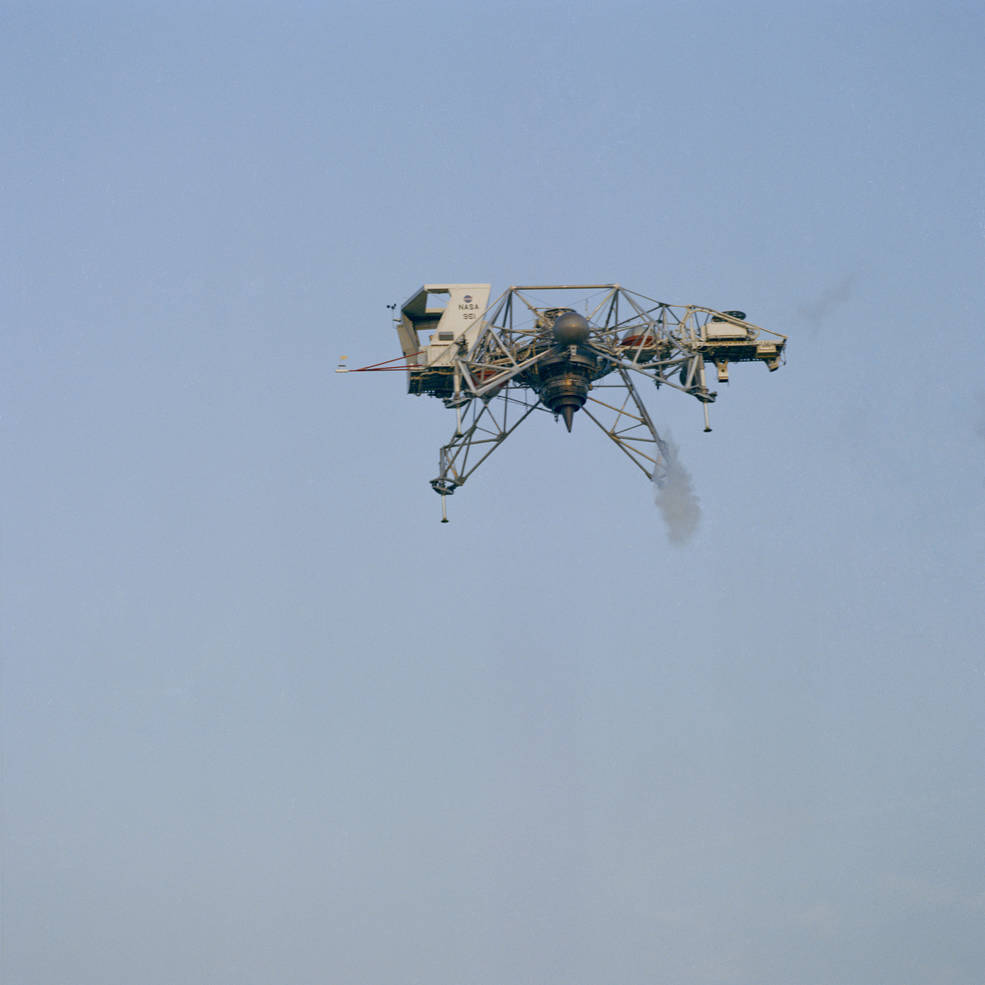
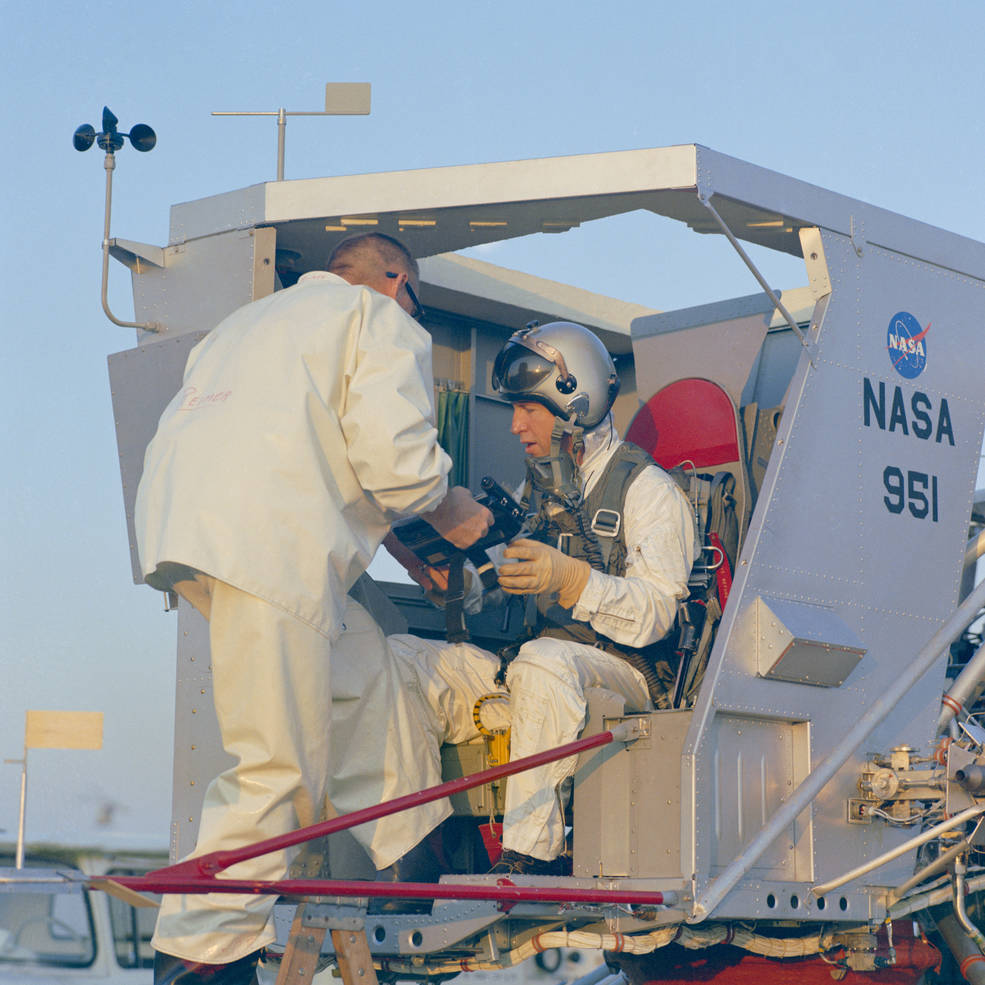
Left: Apollo 11 backup Commander Lovell during one of his LLTV training flights. Right: Lovell after completing one of his LLTV flights.
Because of the limited availability of the vehicle, only Apollo Commanders used the single-seat Lunar Landing Training Vehicle (LLTV) as a training tool to simulate the LM’s flying characteristics in the final 200 feet of the descent to the surface. Armstrong completed his training in mid-June with eight flights in LLTV-2, the only vehicle available at the time, at Ellington Air Force Base near the Manned Spacecraft Center (MSC), now the Johnson Space Center in Houston. Backup Commander Lovell flew his first flight on June 30, with additional training missions in early July. Lunar Module Pilots as well as Commanders used the Lunar Landing Research Facility (LLRF) at the NASA Langley Research Center in Virginia for training. Aldrin and Armstrong made several training runs in the LLRF at the end of June, in addition to sessions they had completed earlier in their training program. Lovell and Haise had also practiced using the LLRF.
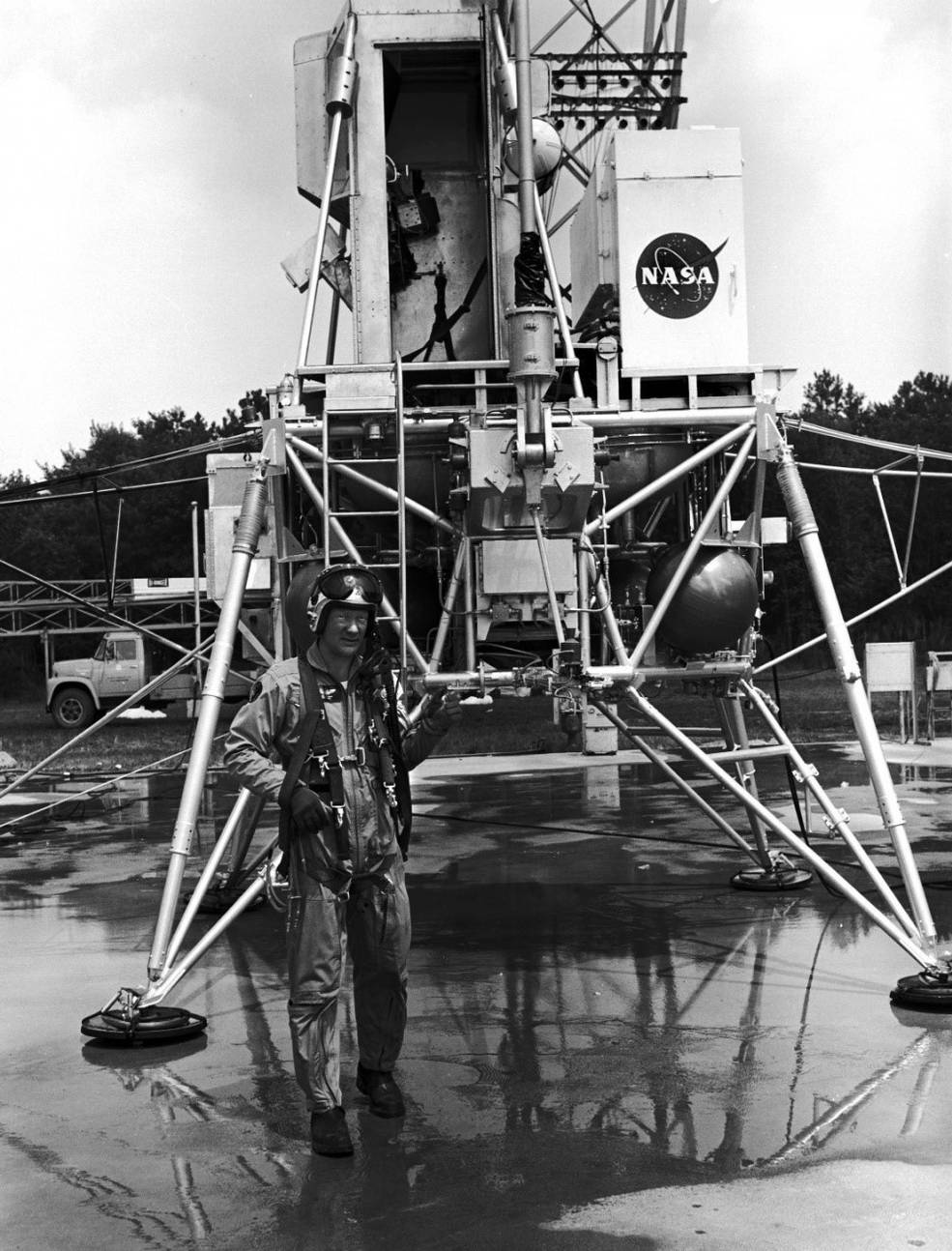
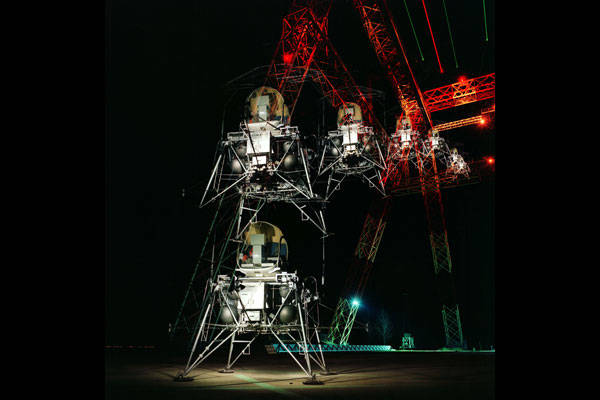
Left: Aldrin after a training run in the LLRF at Langley. Right: Multiple exposure of a nighttime test run in the LLRF illustrating the descent profile.
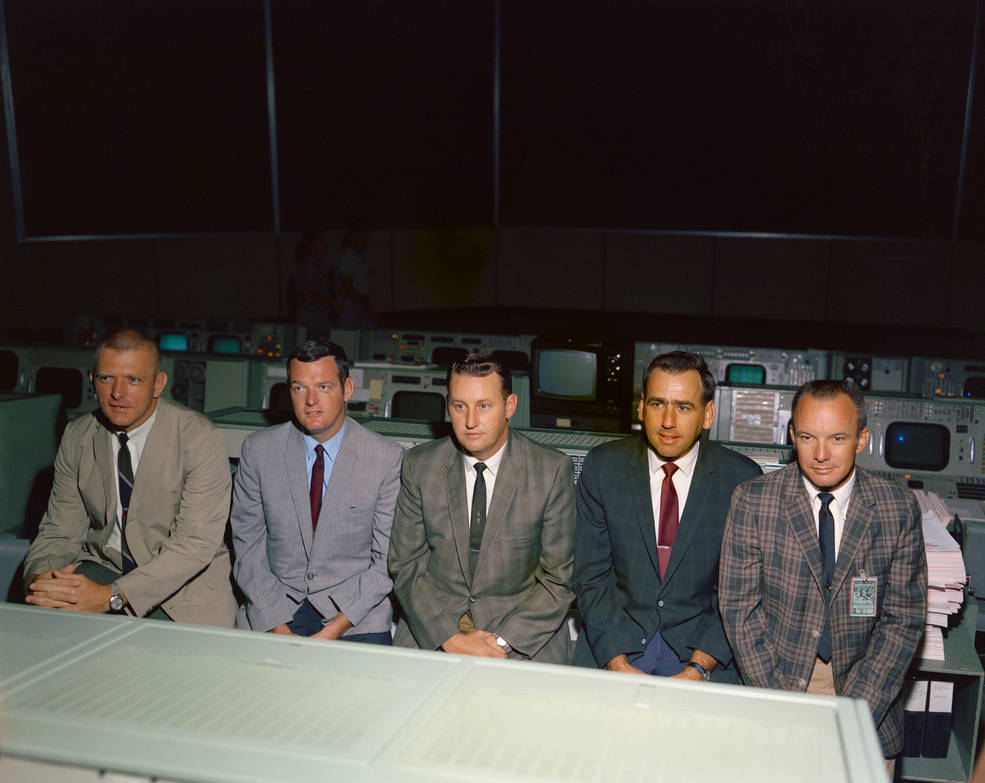
Apollo 11 Flight Directors (left to right) Kranz, Lunney, Charlesworth, Windler, and Griffin in Mission Control.
The Mission Control Center (MCC) located at MSC served as the focal point for monitoring all aspects of Apollo missions. MCC took over control of the flight from KSC as soon as the Saturn V rocket cleared the launch tower, and continued in that role until after splashdown. Three teams of flight controllers working eight-hour shifts monitored all aspects of the mission, led by experienced flight directors. The Green Team, led by Clifford E. Charlesworth, was the first shift, on console during the launch and the first few hours of the mission. The second shift, Eugene F. Kranz’s White Team, was on console during the Moon landing, while the Black Team led by Glynn S. Lunney comprised the third team. Flight Directors Milton L. Windler and Gerald D. Griffin provided assistance as required. A team of astronauts intimately familiar with all aspects of the mission served as Capsule Communicators, or Capcoms, talking directly with the crewmembers in space. Capcoms for Apollo 11 were Charles M. Duke, Ronald E. Evans, Bruce McCandless, Owen K. Garriott, James A. Lovell, William A. Anders, Thomas K. Mattingly, Fred W. Haise, Don L. Lind, and Harrison H. Schmitt.
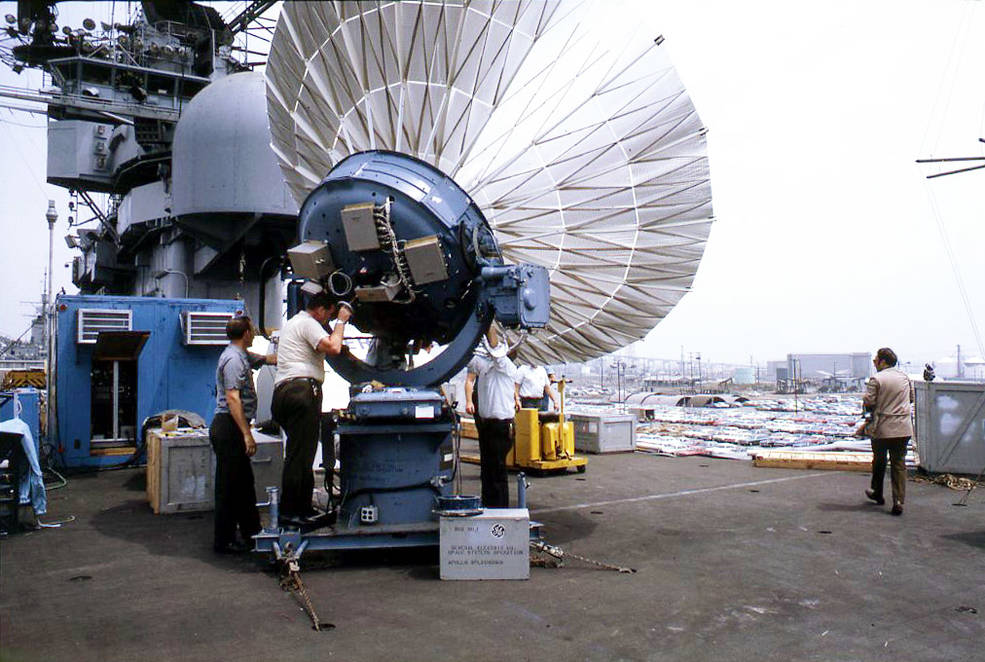
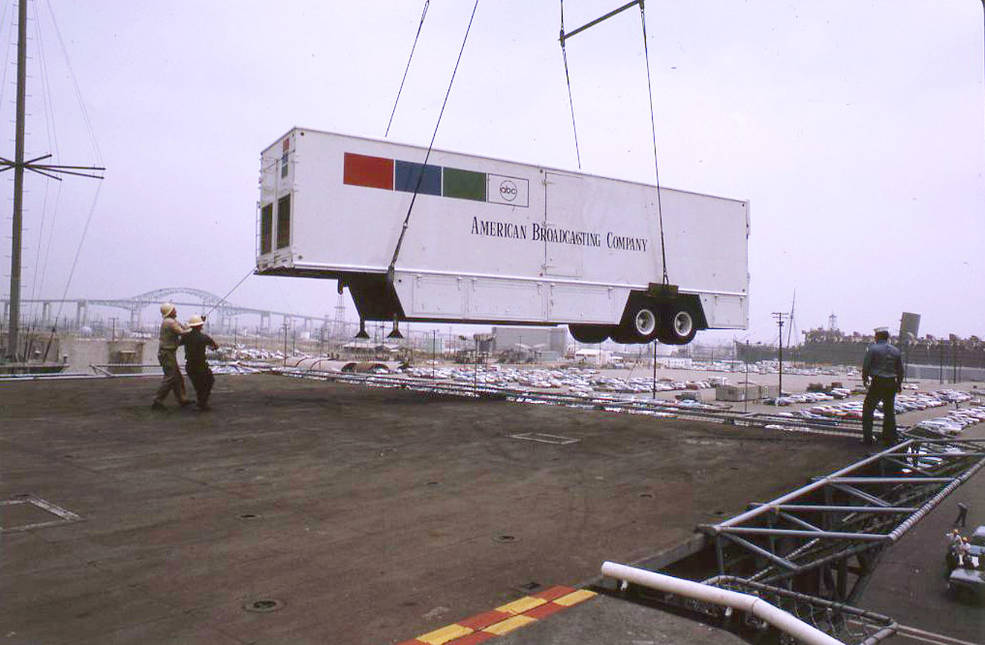
Left: Workers installing a broadcast TV antenna aboard USS Hornet in Long Beach, California.
Right: Workers loading one of the three ABC News trailers aboard USS Hornet in Long Beach.
Credits: US Navy, Bob Fish.
In the Pacific Ocean, preparations continued to support the return of the Apollo 11 astronauts from the Moon. The USS Hornet (CVA-12), designated as the Prime Recovery Ship for Apollo 11 on June 5, was docked in her home port of Long Beach, California, being refitted for her new mission. Her commanding officer, Capt. Carl J. Seiberlich, held the first recovery team meeting on June 12, to review the Apollo Recovery Operations Manual, written by MSC’s Landing and Recovery Division. Between June 12 and 25, Hornet onloaded NASA equipment required for the recovery, as well as equipment to support the television crews that reported on the splashdown from aboard the ship. These included a General Electric-provided satellite antenna to allow live broadcast of the splashdown and recovery operations, and three trailers for ABC News, selected as the pool network to provide the color TV feed to the other networks. On June 27, Hornet left Long Beach for a three-hour stop in San Diego, California, where airgroup maintenance and support personnel embarked. The next day, after Hornet left for Pearl Harbor, Hawaii, the aircraft required to support the recovery were flown aboard. During the cruise to Pearl Harbor, the 90-man team detailed for Apollo 11 recovery operations held numerous meetings and table-top simulations. Hands on training began after their arrival in Hawaii on July 2.
With all the attention focused on Apollo 11, NASA was also busy preparing for future lunar missions. In case Apollo 11 was not successful at accomplishing the first Moon landing in July 1969, NASA was prepared to try again with Apollo 12 in September, and if that proved unsuccessful as well, with Apollo 13 in December. Therefore, ground teams were preparing spacecraft and launch vehicles with those launch dates in mind. After Apollo 11’s success, the schedule and the pace of processing were relaxed somewhat. The Apollo 12 prime crew of Charles “Pete” Conrad, Alan L. Bean, and Richard F. Gordon and their backups David R. Scott, James B. Irwin, and Alfred M. Worden participated in vacuum chamber tests of their CM and LM in the Manned Spacecraft Operations Building (MSOB) at KSC. Workmen then removed the vehicles from the altitude chambers and stacked them with the Spacecraft LM Assembly (SLA) prior to rolling the spacecraft to the Vehicle Assembly Building (VAB) for mating with the Saturn V rocket. The Apollo 12 Moonwalkers, Conrad and Bean and their backups Scott and Irwin, completed vacuum chamber tests of their spacesuits while practicing lunar spacewalk tasks in the Space Environment Simulation Facility at MSC.
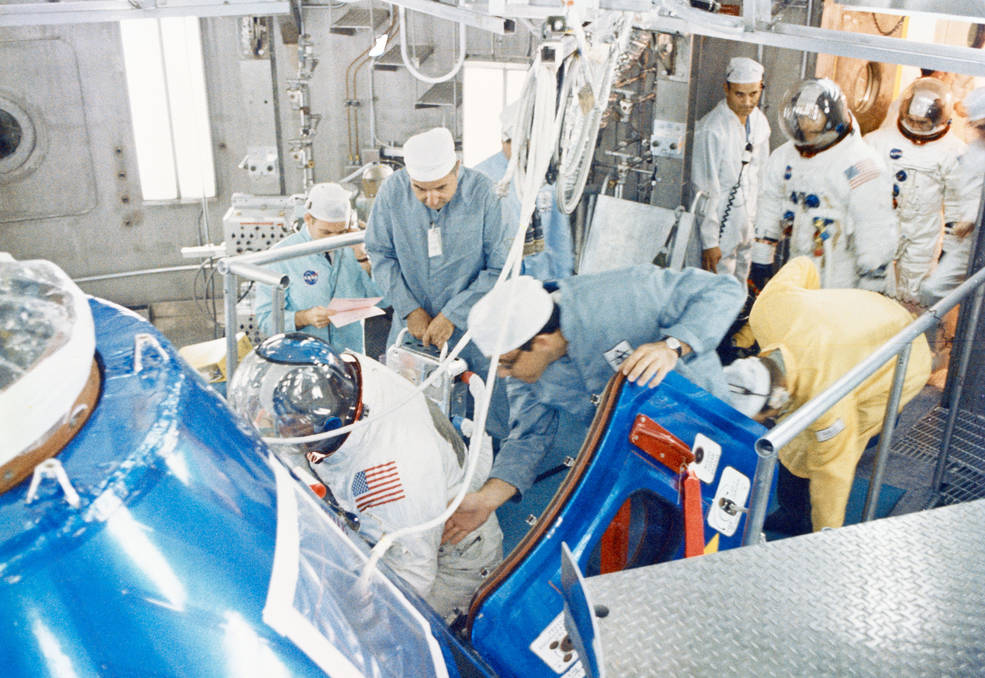
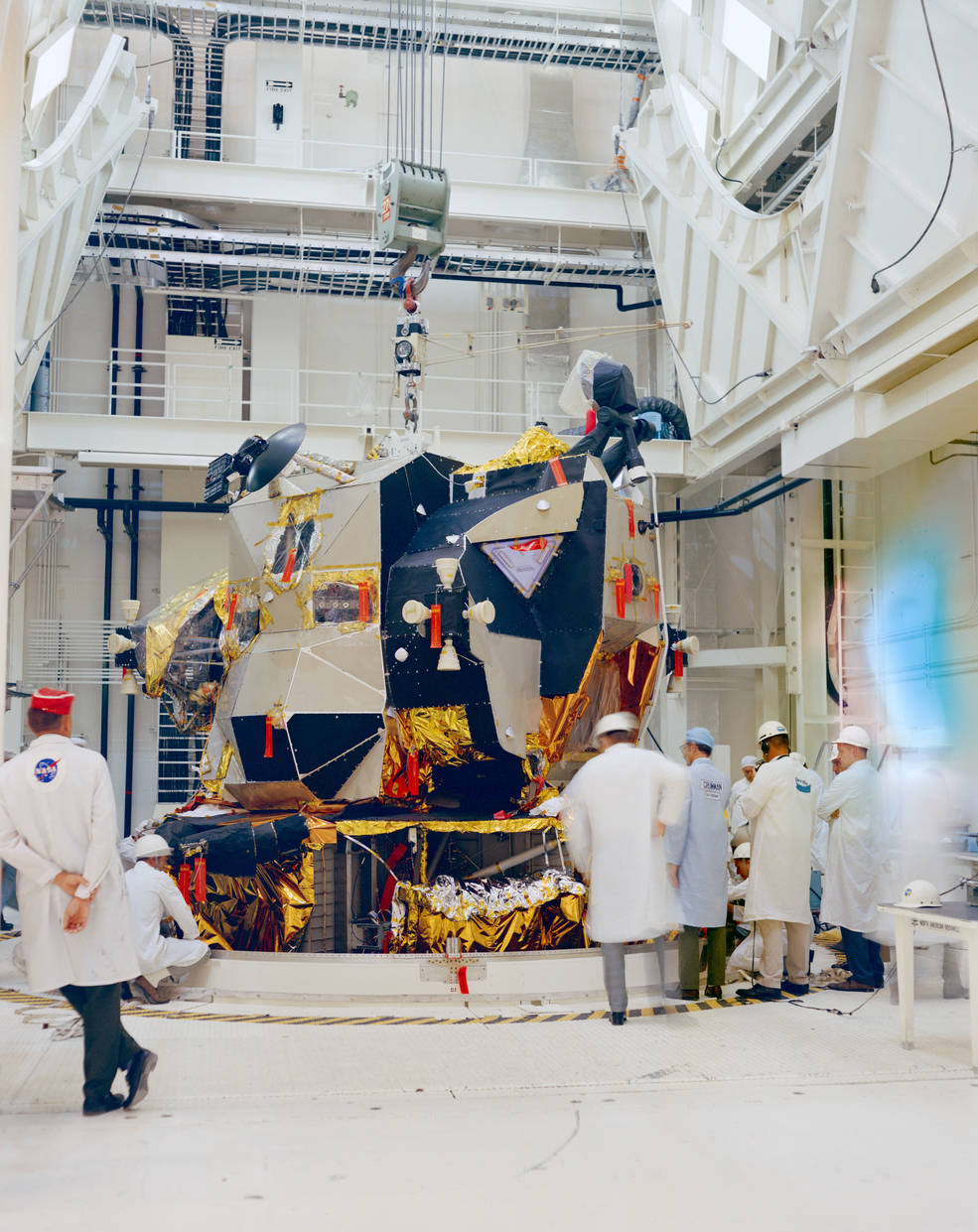
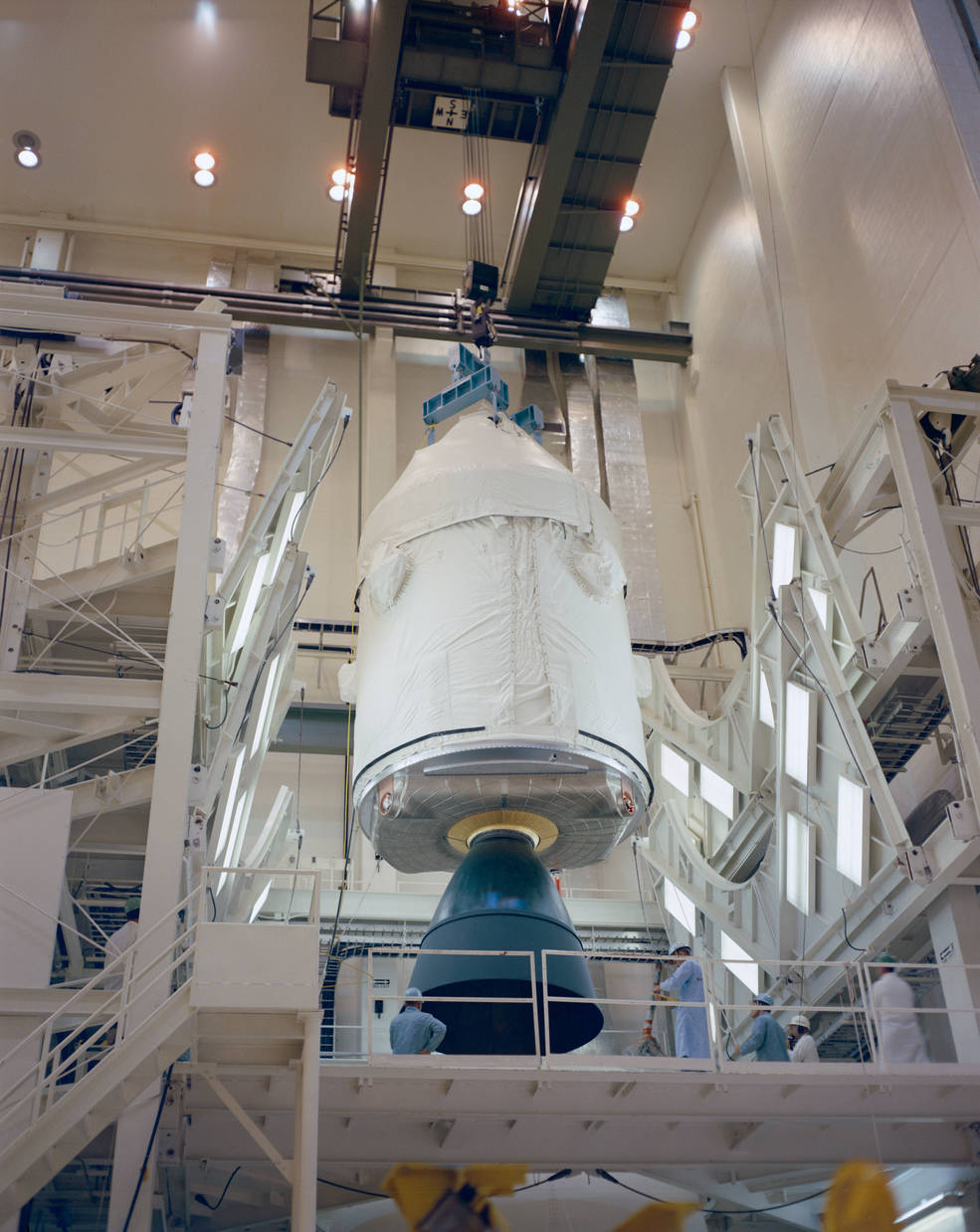
Left: Apollo 12 crew (left to right) of Conrad, Bean, and Gordon entering CM in altitude chamber at KSC.
Middle: Apollo 12 LM being lowered into the bottom section of the Spacecraft LM Adaptor (SLA).
Right: Apollo 12 CSM being lowered onto the SLA.
The three rocket stages for the Apollo 13 mission arrived at KSC during June 1969, and workers in the VAB stacked the S-IC first stage on its Mobile Launch Platform on June 18. The S-II second stage was stacked while Apollo 11 was on its way to the Moon, and the S-IVB third stage added at the end of July. A video of the stacking operations can be viewed here. The CM and SM arrived at KSC on June 26 from its manufacturer North American Rockwell in Downey, California, and the LM ascent and descent stages arrived a few days later from the Grumman plant in Bethpage, New York. Personnel in the MSOB began to prepare the modules for testing.
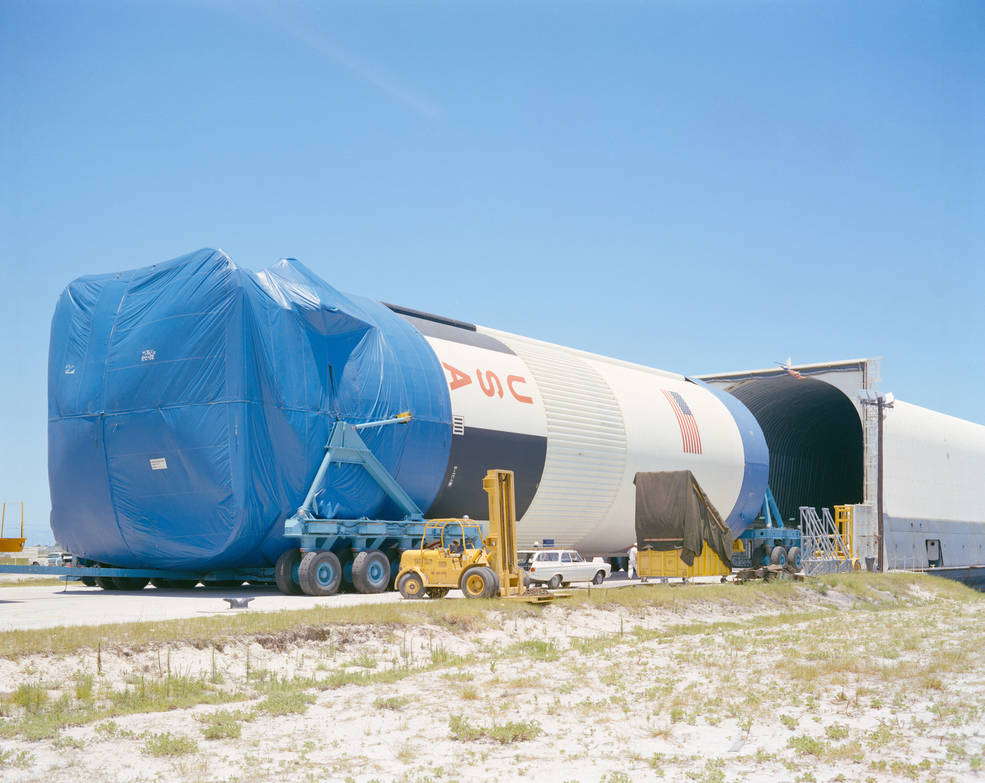
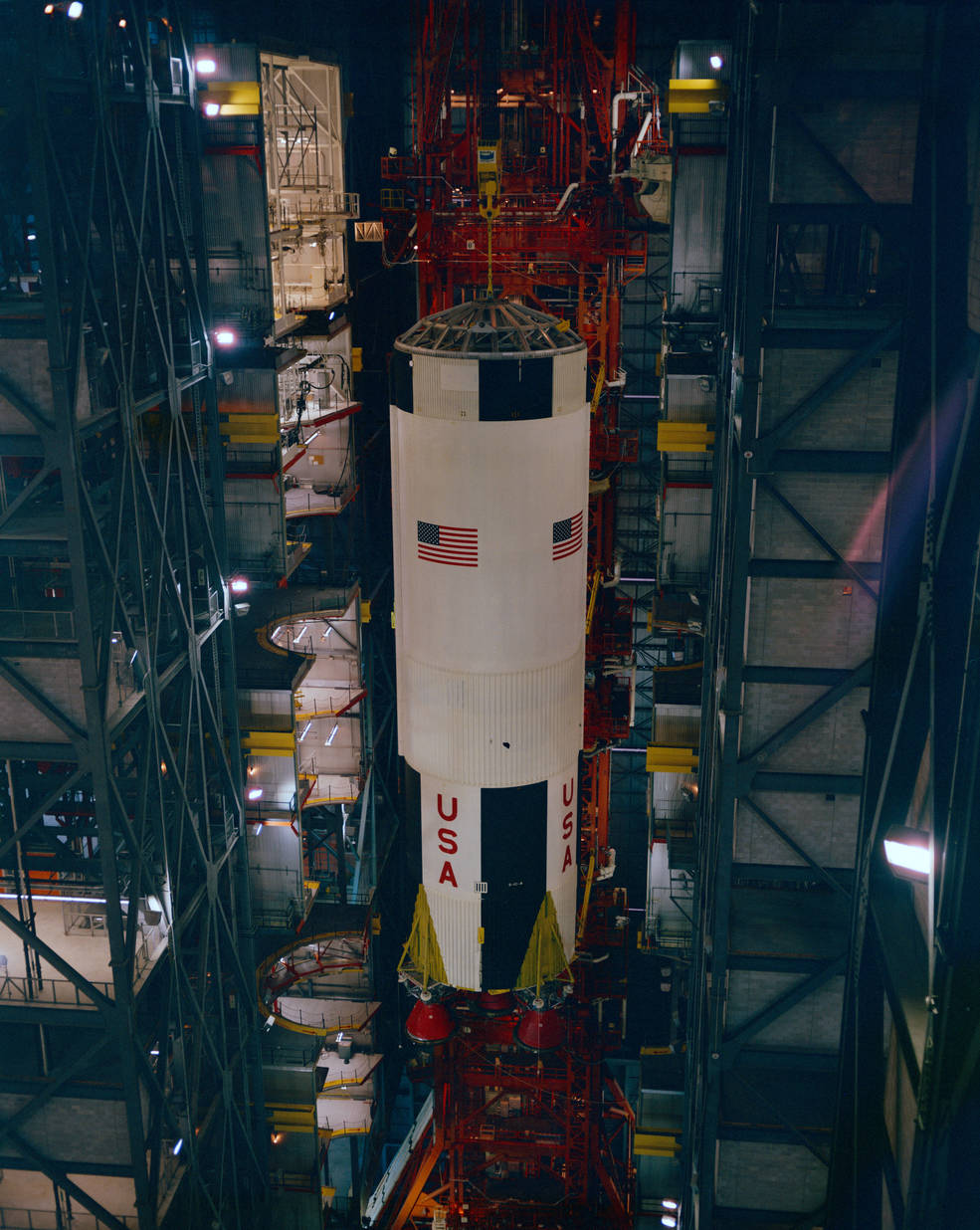
Left: S-IC first stage of the Saturn V for Apollo 13 being offloaded from its barge near the VAB.
Right: S-IC first stage of the Saturn V for Apollo 13 being lowered onto the Mobile Launch
Platform in the VAB.
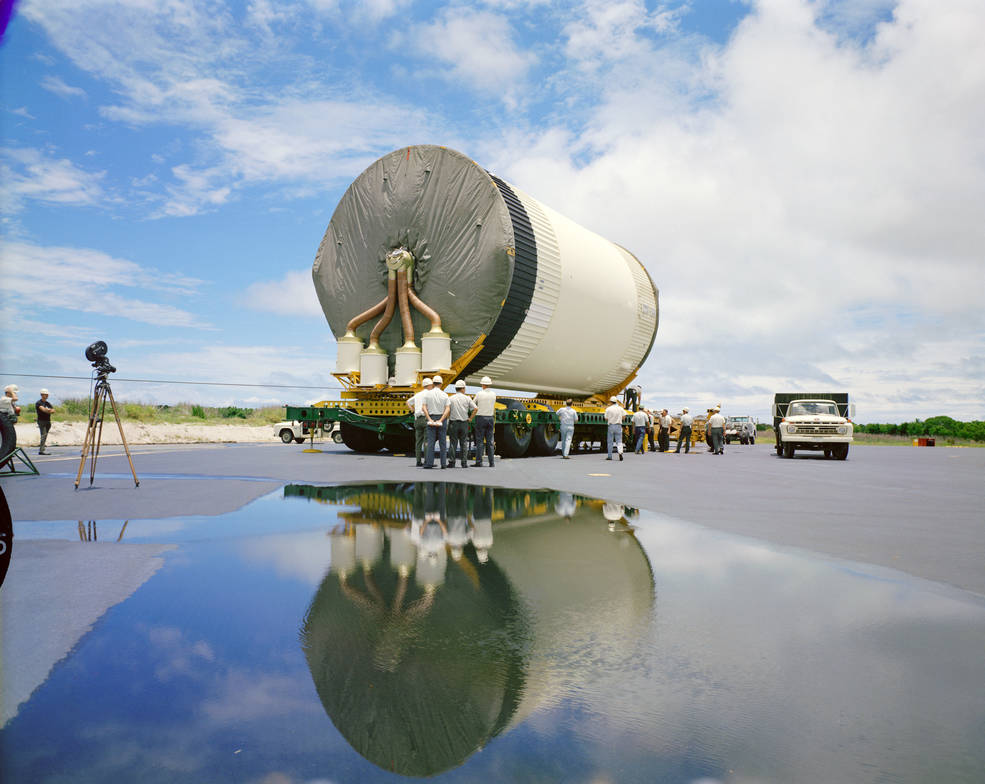
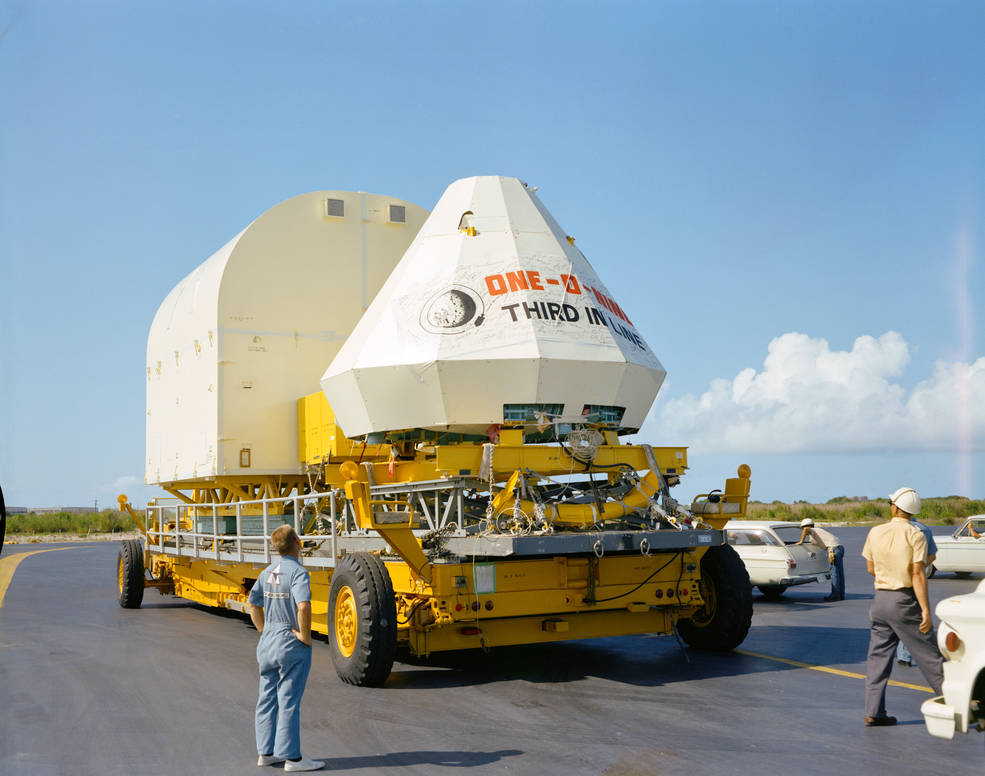
Left: S-IVB third stage of the Saturn V for Apollo 13 after arrival at KSC.
Right: Apollo 13 Command and Service Modules after their arrival at KSC.


















